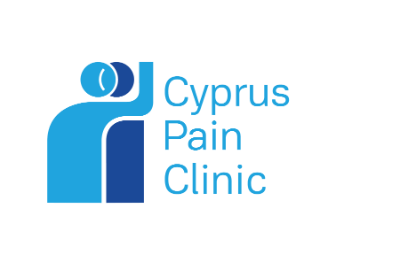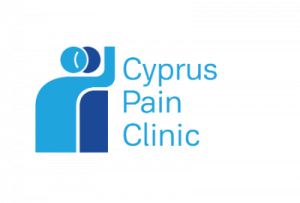The main goal of the following text is to provide valid information about issues related to childbirth and the procedure of epidural anesthesia. Informing the parturient on the childbirth process helps minimize stress and anxiety on that special day.
The anesthesiologist’s duties include, but not limited to, placing the epidural catheter to achieve analgesia during childbirth. The sooner a parturient gets in touch with the anesthesiologist, the easier it will be to get any questions answered and the more prepared she’ll be to opt for the approach that works best for her. In most maternity hospitals, patients are given the opportunity to discuss and be informed by the anesthesiologist a few days before childbirth.
Painless Childbirth
Natural childbirth is a series of physiological events that lead to the placenta and fetus passing through the pelvic canal. It is divided into three stages:
- Dilation stage: It is the duration of the dilation of the cervix, it ranges from 2-10 hours, and is characterized by the presence of rhythmic uterine contractions (labor pains). It includes the latent phase (up to 2-3 cm dilation of the cervix) and the active phase (up to full dilation).
- Expulsion stage: It is the duration of the expulsion (pushing) of the fetus from the maternal cavity. It begins with the full dilation of the cervix and ends with the birth of the fetus.
- Placental stage: It is the last stage that begins after the birth of the fetus and ends with the removal of the placenta and its membranes.
Natural Childbirth – Basic Stages
Pain during natural childbirth
Over 90% of women wish they could be relieved of childbirth pain. Its intensity during natural childbirth varies not only among parturients, but also among childbirths by the same woman, depending on the delivery process. The first childbirth is usually more difficult and lasts longer. It is generally acknowledged that multiparous mothers deliver their babies faster and with less discomfort.
Sometimes, the gynecologist may find it necessary to induce labor or speed it up with drugs if it is progressing slowly. It should be noted that doing so, will probably intensify pain.
Pain intensity is subjective and has been proposed to be influenced by religion, philosophical views, spirituality, biology, and cultural background.[1]
Pain localization and intensity during labor are constantly changing.
- In the latent phase of the first stage, pain is most often described as mild, localized in the abdomen and often radiating to the lower back. If pain is severely intense right from the initial stages, then there is often some cause of dystocia (abnormal projection of the fetus, relative or absolute disproportion between the fetus and the pelvic floor). In the active phase of the first stage, labor pains are severe, with approximately the same localization.
- In the second stage, the main cause of pain is the pressure exercised by the fetus on the pelvis and the dilation of the vagina and perineum. Pain begins to intensify and spread to the perinatal area and thighs.
- During the third stage, pain intensity is reduced and the need for analgesia is limited to suturing the perineotomy.
Pain effects from natural childbirth – the importance of analgesia
One of the main concerns a parturient has is the possible effects of pain, which are caused by natural childbirth.
Felicity Reynolds, Professor of Obstetric Anesthesia, posed the following question:[2] “If pain is so quickly forgotten, and if the greater the pain, the greater the euphoria in labor, then why should we treat it with artificial means?” There are also large, international movements that share her view, that “after a natural non-invasive childbirth, mother and newborn are able to bond even better”.
However, it appears that reality is completely different. If pain is forgotten, this does not mean that it becomes more tolerable during labor. The argument that anxiety exacerbates pain and, therefore, the aim is to address anxiety, cannot negate the fact that analgesia is more effective in reducing anxiety.
Additional benefits of analgesia include a decrease in the frequency of C-sections (as a result of higher cooperation with the parturients) as well as an increase in the efficiency of labor pains and a quicker dilation of the cervix due to a decrease in sympathetic activity.
Last but not least, in cases where a C-section is deemed required, epidural anesthesia offers a significant advantage. In this case, a parturient will probably avoid general anesthesia and, with proper management of the epidural catheter by the anesthesiologist, C-section will follow. A parturient will have the opportunity to experience the birth of her newborn and avoid any possible complications from general anesthesia.
Analgesia Methods
In general, the analgesia methods used for pain management during labor can be classified into three major categories:
- Non-pharmacological analgesia methods
- Pharmacological systemic analgesia methods
- Nerve block
Epidural analgesia
Everybody can have an epidural catheter placed for a variety of reasons. It can be used for anesthesia during specific procedures, for post-operative analgesia purposes, in individuals with chronic pain (such as cancer patients), and in other settings. This is the most effective analgesia method in natural childbirth.
What should women look out for before having an epidural catheter?
All expectant mothers can have an epidural catheter placed, with the exception of those with diseases that affect blood clotting. Women on anticoagulants during pregnancy should have their treatment discontinued prior to the catheter placement. Additionally, their gynecologist must assess how well their blood clots. Following consulting with the anesthesiologist and gynecologist, it should be avoided in specific pregnancy complications.
Epidural analgesia may be preferable in situations where labor is extremely prolonged or complicated, as it can both help a mother better manage her pain and be beneficial to the baby.
How is epidural analgesia administered?
The anesthesiologist inserts a small fine tube (epidural catheter) through a special needle into a space (epidural space) located in front of the spinal sac at the L3-L4 or L4-L5 level (the spinal sac surrounds the spinal cord up to the level L1 -L2).
The anesthesiologist will deliver pain medication through the catheter once it has been securely implanted. Pain alleviation starts to take effect approximately ten to twenty minutes after the medications are administered and lasts for one to two hours, without particularly numbing or weighting the legs down. If necessary, repeated doses are given until the birth of the newborn.
Epidural analgesia does not affect the progression and duration of the active phase of the first stage of labor. On the contrary, it improves irregular uterine contractions. The second stage of labor can be prolonged, but this does not affect the fetus when properly managed by the obstetrician and anesthesiologist. Epidural analgesia may increase the possibility of forceps delivery; however, this can be prevented by utilizing oxytocin and more diluted local anesthetic solutions. Epidural analgesia does not cause dizziness or nausea and can relieve anxiety and stress experienced during labor. It does not delay breastfeeding; on the contrary, it sometimes helps it.
Until the baby is born and the mother is discharged from the delivery room, the anesthesiologist must stay by the patient to manage not only her pain but also any other issues that may occur (e.g., hypotension). Finally, it is stressed that epidural analgesia has little to no effect on the newborn.
Complications from epidural analgesia
Hypotension (low blood pressure) is the most common complication. One out of every 100 women will experience headaches, and there are numerous treatments available.
Back and lower back pain are common in pregnancy, as well as after childbirth. During pregnancy, these pains affect about 50% of expectant mothers, while in about 40% of such women these pains persist even after childbirth. One third of pregnant women report a serious back problem that interferes with their everyday lives. Even though there may be a little tenderness at the site of the epidural injection for two or three days after the procedure, back pain won’t become worse.
Today, neurological disorders and specific more serious issues are becoming less common. Last but not least, the toxic effect is mainly due to exceeding the dose of the drugs and to their accidental intravascular administration.
References
- Mander R. The meanings of labor pain or the layers of an onion? A woman oriented view. Journal of Reproductive and Infant Psychology 2000;18:133-141.
- Reynolds F. The value of pain relief. In: Pain relief in labour. Ed. F. Reynolds. London: BMJ Publishing Group. 1997:4


